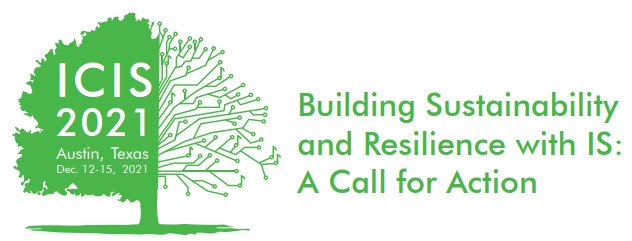Conference Theme Track A: IS for Sustainability
Paper Number
1574
Paper Type
Completed
Description
Bikesharing systems constitute a pivotal pillar to foster sustainable urban mobility. To leverage this potential, information systems (IS) research addresses both (a) decision support systems for operators to increase access to vehicles and (b) mobile app designs for end-users. However, the salient question of situational factors determining when users utilize bikesharing or decide for alternative modes has received limited attention. We present results of a large-scale stated choice experiment analyzing the shape and size of situational catchment areas, the role of vehicle pickup detours, and the perception of spatial versus time-dimensional visualizations. Our results challenge established assumptions of uniform circular catchment areas. Moreover, while map visualizations of detours lower the willingness to engage in bikesharing, they do not significantly increase the perceived information quality. We conclude with theoretical and practical implications for both decision support and user engagement to promote sustainable shared mobility.
Recommended Citation
Willnat, Mathias; Lembcke, Tim-Benjamin; Harnischmacher, Christine; Prinz, Christoph; and Klumpp, Matthias, "How Far are You Gonna Go? Understanding Pedestrian Catchment Areas in Shared Mobility Systems" (2021). ICIS 2021 Proceedings. 3.
https://aisel.aisnet.org/icis2021/is_sustain/is_sustain/3
How Far are You Gonna Go? Understanding Pedestrian Catchment Areas in Shared Mobility Systems
Bikesharing systems constitute a pivotal pillar to foster sustainable urban mobility. To leverage this potential, information systems (IS) research addresses both (a) decision support systems for operators to increase access to vehicles and (b) mobile app designs for end-users. However, the salient question of situational factors determining when users utilize bikesharing or decide for alternative modes has received limited attention. We present results of a large-scale stated choice experiment analyzing the shape and size of situational catchment areas, the role of vehicle pickup detours, and the perception of spatial versus time-dimensional visualizations. Our results challenge established assumptions of uniform circular catchment areas. Moreover, while map visualizations of detours lower the willingness to engage in bikesharing, they do not significantly increase the perceived information quality. We conclude with theoretical and practical implications for both decision support and user engagement to promote sustainable shared mobility.
When commenting on articles, please be friendly, welcoming, respectful and abide by the AIS eLibrary Discussion Thread Code of Conduct posted here.




Comments
01-Sustainability